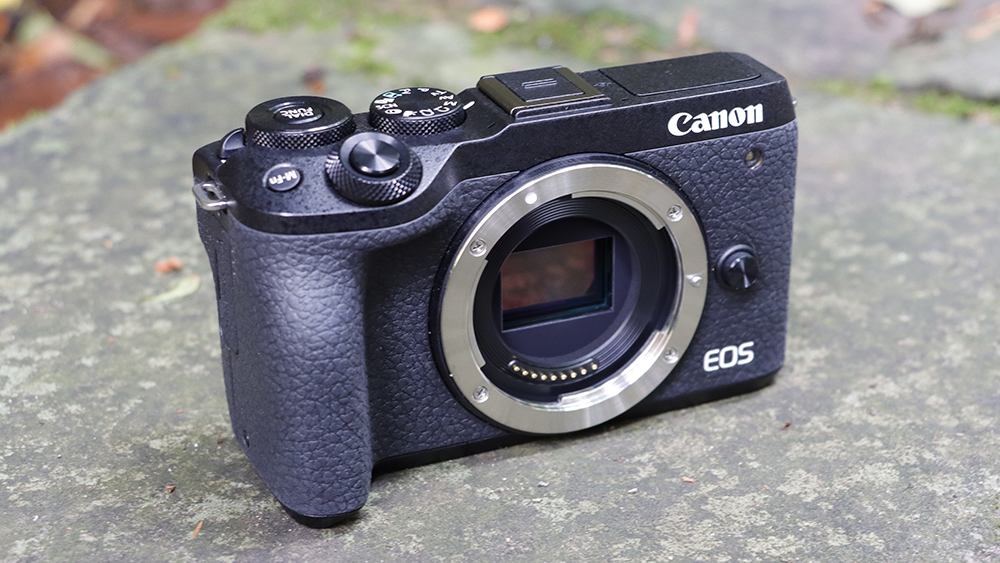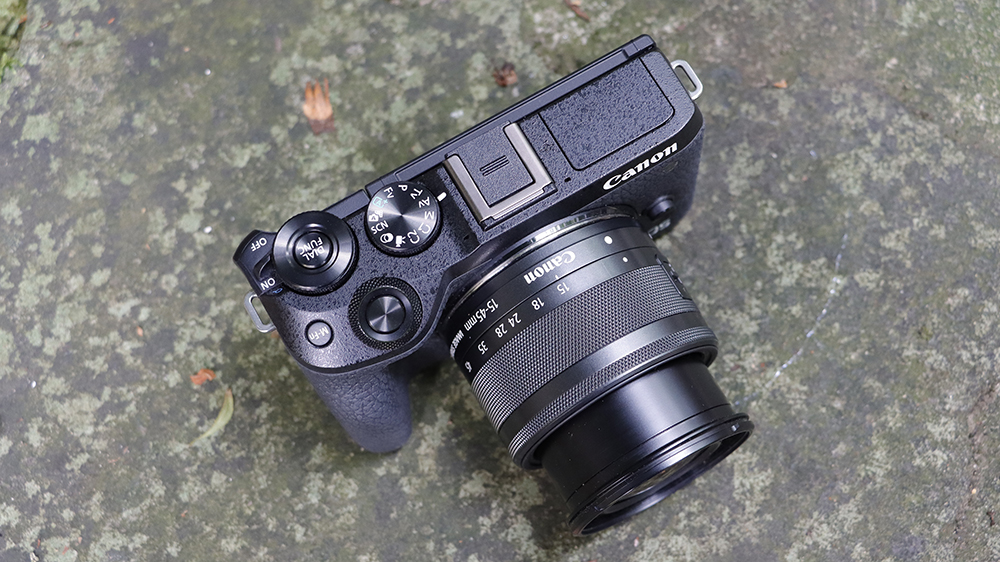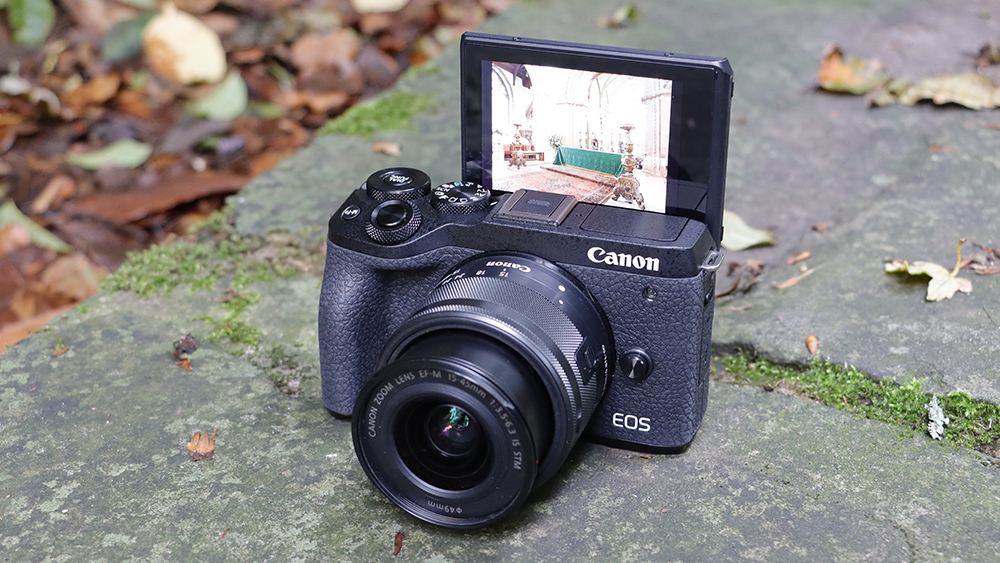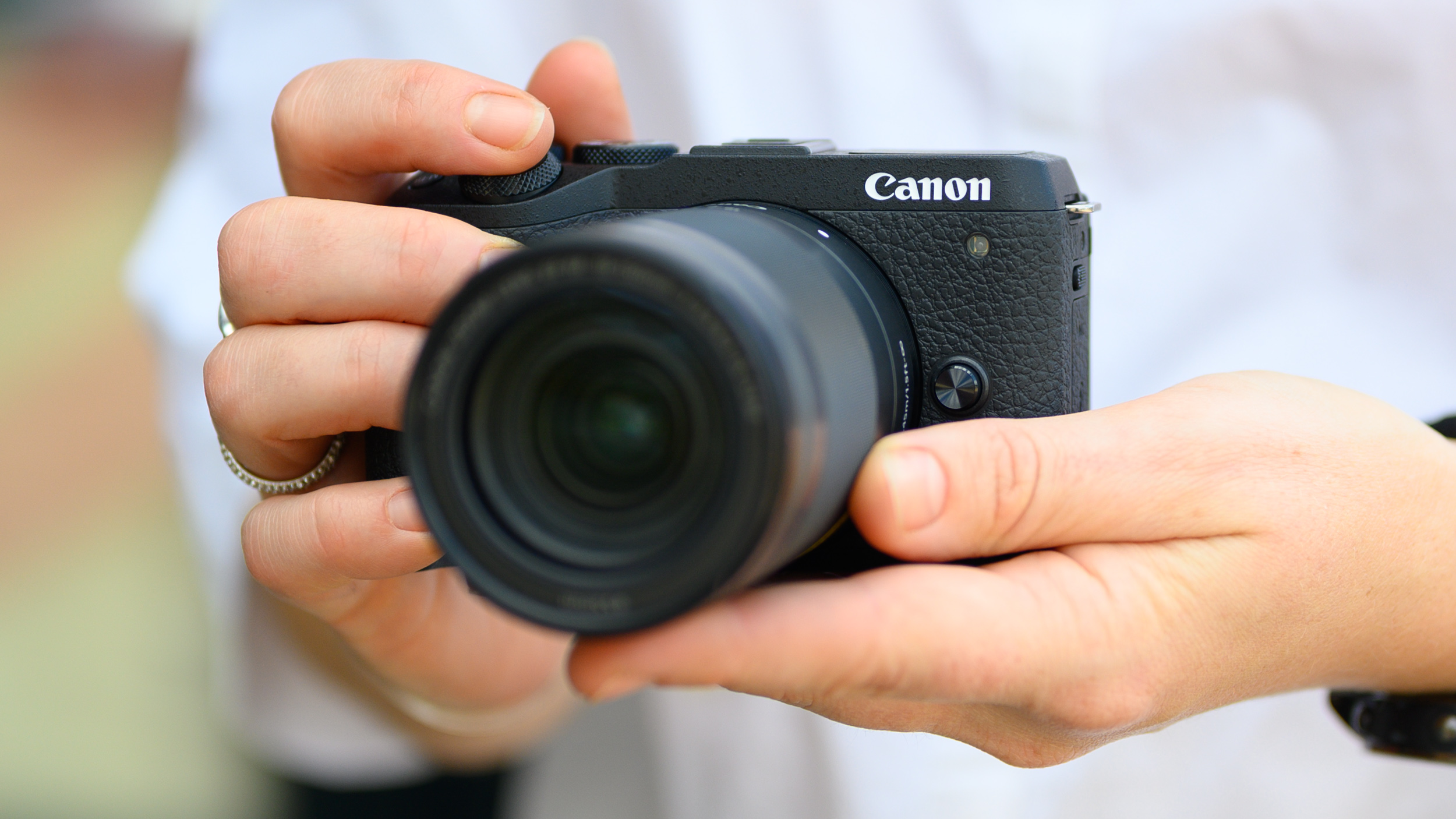Why you can trust TechRadar
Build and handling
- Compact design with new sturdy grip
- No viewfinder included – optional one available
- Tilting touch-sensitive screen
The small size of the Canon EOS M6 Mark II belies what it’s capable of under the hood, with Canon packing an impressive array of specs into the relatively unassuming-looking body.
A new grip helps the M6 Mark II to feel noticeably sturdier than its predecessor, although it's still nice and light at just 408g. There’s no built-in viewfinder, which will be a negative for some traditionalists, but for those coming from a smartphone it'll be less of an issue – and if you do need one, the detachable EVF-DC2 finder is available as an optional extra.
The 1.04 million-dot tilting LCD screen is the same as the panel on the first-gen M6. This pivots to face all the way forward for selfies, as well as angling down to 45 degrees for shooting from high angles.
Despite its small size, the M6 Mark II is well populated with dials and buttons for adjusting settings, all of which are clustered on the right-hand side of the camera, making it easy to control with one hand.
On the top plate are a trio of dials. There’s a mode dial which features all the usual semi-automatic and manual modes, alongside some helpful automatic, scene and custom modes, while encircling the shutter release button at the front is a scrolling dial which can be used for different functions depending on which mode you’re using – aperture when you're in aperture priority mode for example.



The third dial, towards the back of the top plate, can be customized via a function button in its center, and is handy for making quick changes to settings such as ISO, white balance, and focusing mode.
On the rear of the camera are a collection of buttons which are mostly self-explanatory; these include a Q button than enables you to adjust key settings via a quick menu, and a switch for flicking between manual focus and autofocus.
As it stands, there aren’t a huge amount of native Canon EF-M lenses – we’ve been testing the EOS M6 Mark II with the EF-M 15-45mm f/3.5-6.3 kit lens, which is a good lens to get started with, although you may quickly find that you crave something with a wider aperture, and/or a longer focal length.
You can use the M6 Mark II with any existing EF or EF-S lens via Canon's optional EF-EOS mount adapter, although doing so tends to make the overall combination slightly imbalanced thanks to the camera’s small size, so we wouldn’t particularly recommend it.
Autofocus
- Up to 5,481 AF points
- 143 automatic AF areas
- Up to 88 x 100% coverage depending on lens
Compared to the original M6, the Canon EOS M6 Mark II has a baffling-sounding 5481 points, but don’t worry – you won’t be expected to scroll through that many. In essence, it just means that you can tap pretty much anywhere on the screen to select an autofocus point. If you choose to leave the camera to make a selection, it will do so using 143 auto AF areas.
Focusing from the M6 Mark II is impressively speedy – there’s no hanging around here. In good light, the camera will lock onto targets with impressive speed and accuracy. In very low light you might find there’s a little hunting, but it’s incredibly rare for a false confirmation of focus to be presented.
One of the headline features of this camera is 14fps shooting (see the Performance section for more on that), with autofocus operating in between each shot, making the camera ideal for sports and action photography. The hit rate is pretty impressive: so long as you’re following a moving subject that isn't too erratic, the M6 Mark II does a great job of keeping up with the action (and bear in mind that we tested the camera with the 15-45mm kit lens – other optics may deliver even better performance).
Current page: Build, handling and autofocus
Prev Page Introduction and features Next Page Performance and image qualityAmy has been writing about cameras, photography and associated tech since 2009. Amy was once part of the photography testing team for Future Publishing working across TechRadar, Digital Camera, PhotoPlus, N Photo and Photography Week. For her photography, she has won awards and has been exhibited. She often partakes in unusual projects - including one intense year where she used a different camera every single day. Amy is currently the Features Editor at Amateur Photographer magazine, and in her increasingly little spare time works across a number of high-profile publications including Wired, Stuff, Digital Camera World, Expert Reviews, and just a little off-tangent, PetsRadar.

